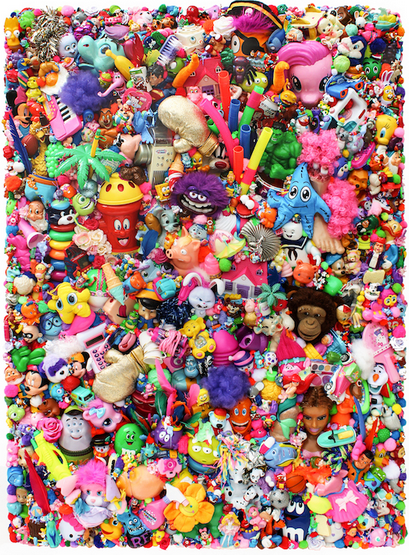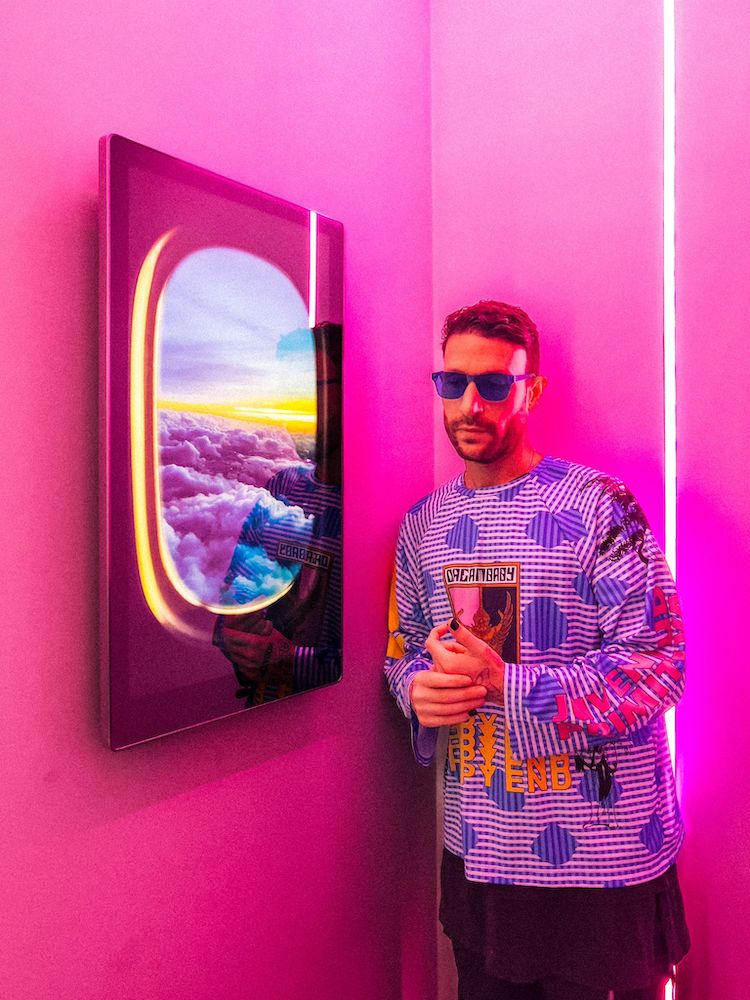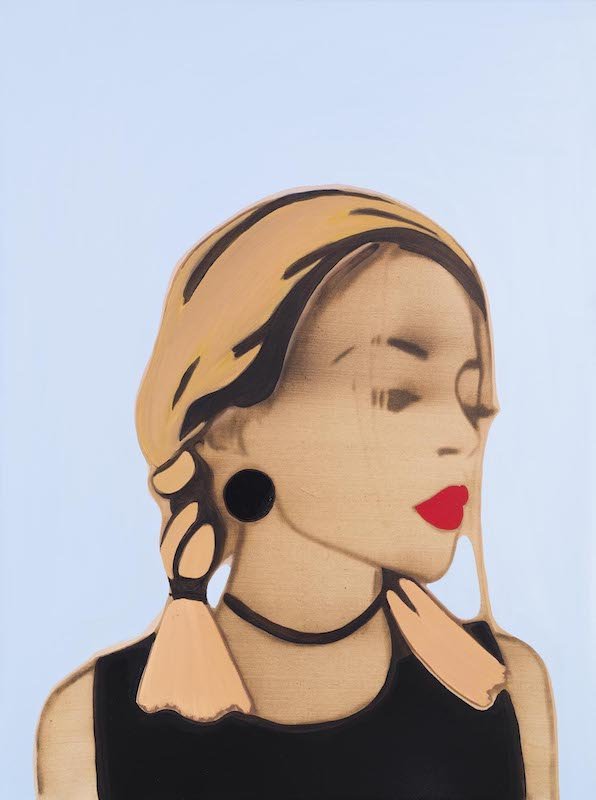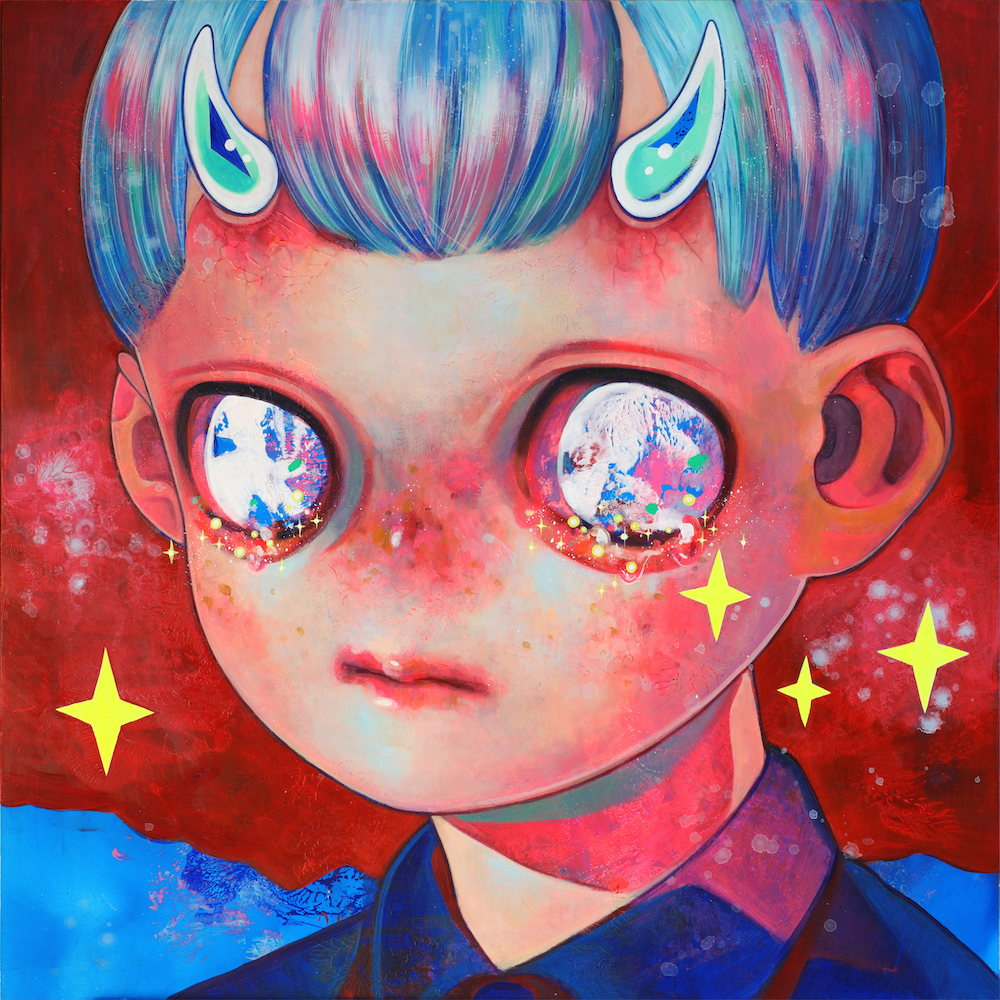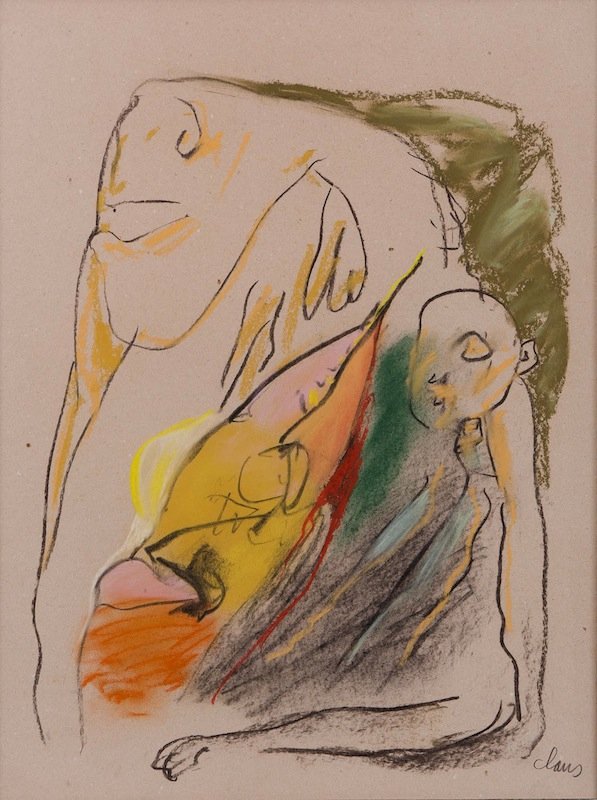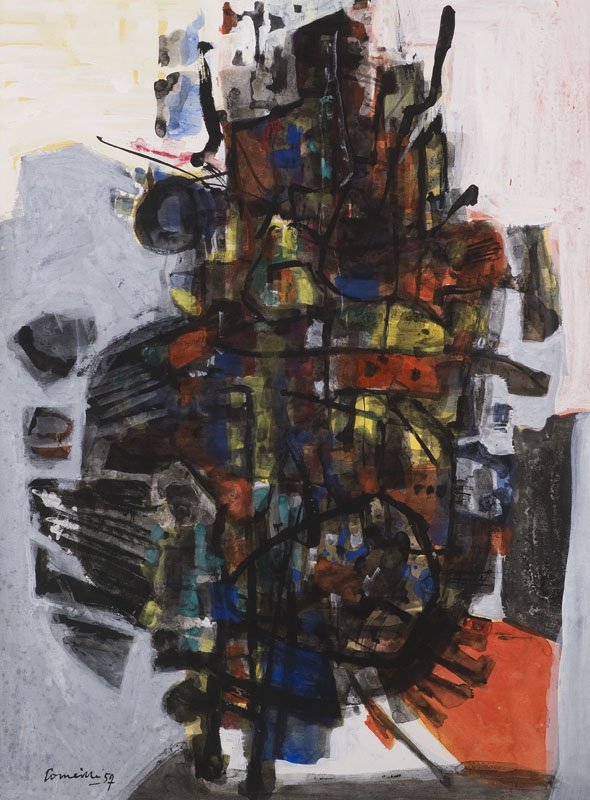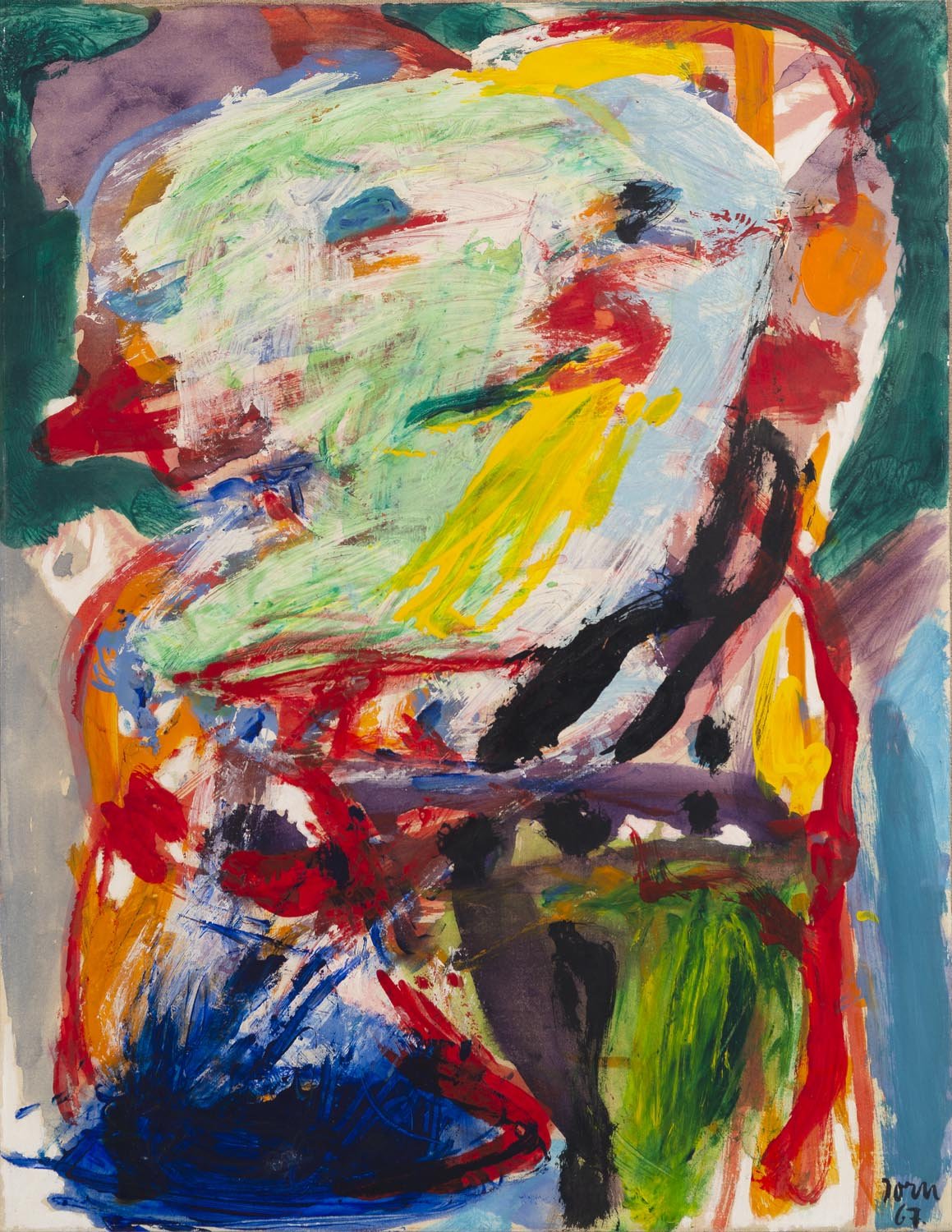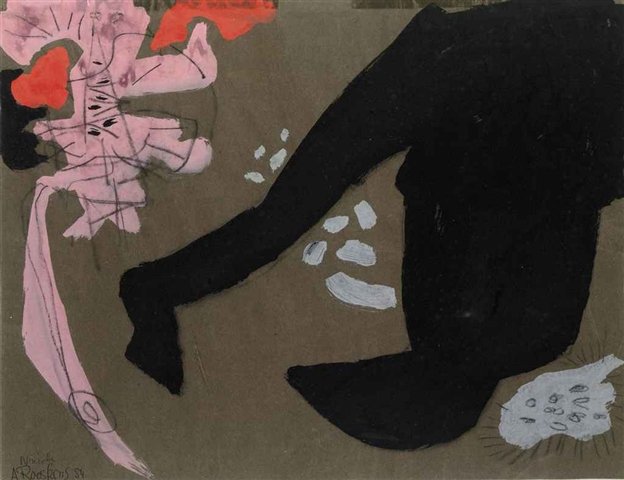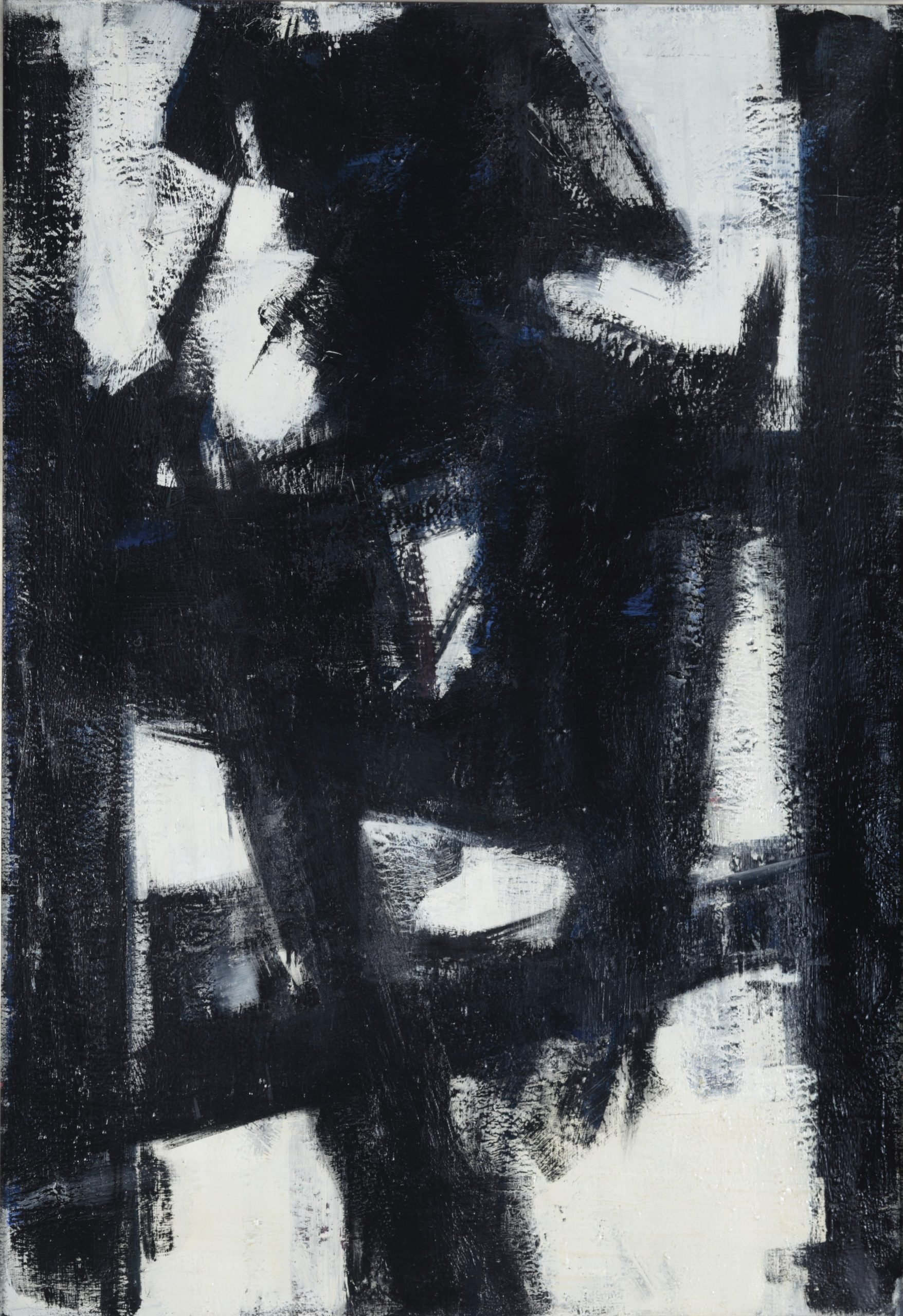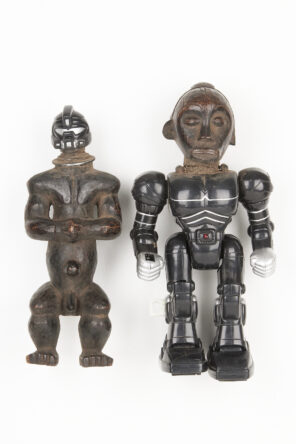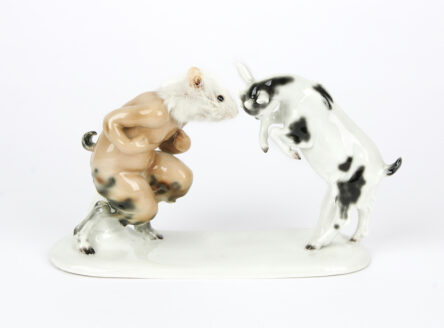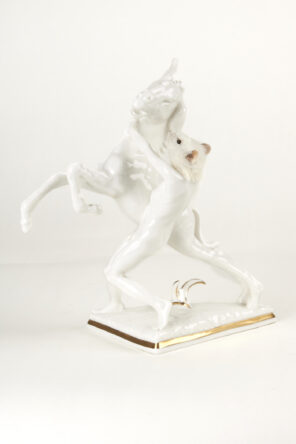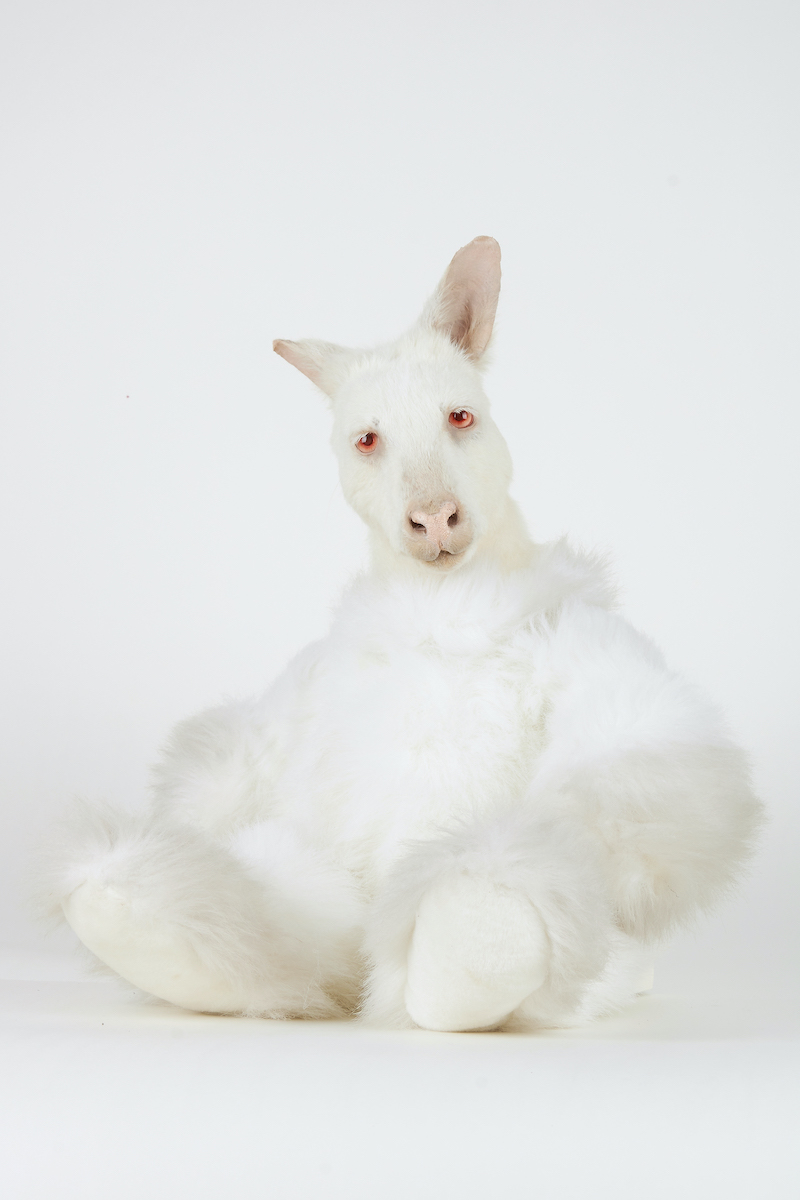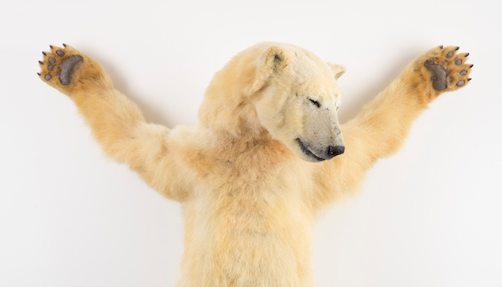Michel Vanderheijden van Tinteren (1965) and Roel Moonen (1966) met at the Maastricht Institute of Arts, where they both studied Plastic Design. The duo has worked together as Atelier Les Deux Garçons since 2000.
The work of Les Deux Garçons is wide-ranging. Striving always for perfection in their chosen materials and the finishes, they create collages, bronze statues, assemblages, installations, costumes, stage sets, and sculptures of taxidermy (stuffed animals). These are frequently absurd, and at times emotive sculptures, made using materials picked up at taxidermists as well as auctions and antique dealers. Often, the artists present their deer, lambs, piglets and other animals as Siamese twin or multiples, or as a combination of human and animal. Recognition, fear, fate, transience, sexuality, gender, religion, or concern for our planet are recurring motifs. Whilst humour – at times morbid – is certainly a theme,
their work is also deliberately thought-provoking. For Les Deux Garçons themselves, this often represents (the Siamese twins being one example) choices made earlier in life which can overshadow the present and the future. This explains titles like ‘L’adieu Impossible’ (The Impossible Farewell), which was also the name of their first exhibition at Jaski Gallery in 2008. ‘La Fragilité’, the second exhibition in 2009, conveyed the same message, as did the third, ‘L’Éphémère tangible’ in 2011.
Les Deux Garçons have gained worldwide renown. Distinguished art institutions such as the Niarchos Foundation (Saint Moritz, Monaco), Safia El Melqui (Monaco, Knokke, Paris), Fondation Pierre Bergé et Yves Saint Laurent (Paris), Catharine David (Documenta Kassel), Leon Tovar (New York) and Yoram Roth (Berlin) have added works by LDG to their collections. Famous design fair ‘Salone del Mobile’ in Milan has also showcased them. Other venues to have staged the duo’s work include the Gemeente Museum in The Hague, the Stedelijk Museum Schiedam, the Ludwig Forum in Aachen, the ‘Contour and Continuity’ exhibition at three museums in Delft, and the ‘Bloedmooi’ (literally: bloody lovely) exhibition at Rotterdam’s Schielandshuis, alongside names such as Jan Fabre, Jean Paul Gaultier and Maison Givenchy.
From December 2012 to the end of May 2013, Les Deux Garçons were the subject of a retrospective exhibition at the Stedelijk Museum in Zwolle. In 2016, they had a solo exhibition of 125 works at Maastricht’s Museum Aan Het Vrijthof. Art museum Kunstmuseum Den Haag purchased a costume that had been created for the ‘FashionClash Festival’ in Maastricht. Princessehof National Museum of Ceramics in Leeuwarden also acquired works, as did Museum Beelden Aan Zee in Scheveningen which, in 2017/2018, staged their solo exhibition ‘Parcours.’ Choreographer Naninne Linning invited them to design costumes, sculptures and stage sets for her ballet productions ‘Requiem’ and ‘Bosch.’
Another solo exhibition at Jaski Gallery, from 11 until 26 November 2023, was entitled ‘Les Immortels Contemporains’. It presented classical bronzes, human figures with taxidermy animal heads and polar bears, and porcelain pieces including a preliminary study for a large outdoor commission for Maastricht to mark the 200th anniversary of the Maastricht Institute of Arts. The Institute owns one of the biggest collections of plaster casts, which has been housed in the same place for 200 years and is still intact. This collection inspired the ‘burgers van Maastricht’ (citizens of Maastricht), after Rodin’s ‘Burghers of Calais.’ On 14 December, this sculpture group was unveiled on Herdenkingsplein: three bronze sculptures, each measuring four metres and painted over to look like marble white plaster.








